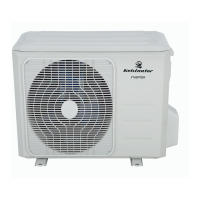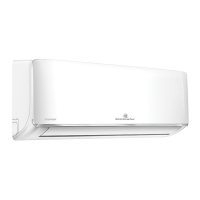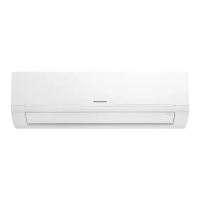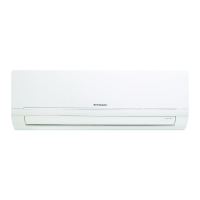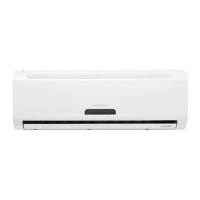Do you have a question about the Kelvinator KSV25CRF and is the answer not in the manual?
Key installation cautions and requirements for safe operation.
Explains the features and placement considerations for the indoor unit.
Outlines the features and installation requirements for the outdoor unit.
Guidelines for choosing an appropriate location for the indoor air conditioner unit.
Criteria for selecting the optimal location for the outdoor air conditioner unit.
Method for firmly anchoring the outdoor unit to its mounting surface.
How to properly manage condensate and defrost water from the outdoor unit.
Steps for securely attaching the indoor unit's mounting plate to the wall.
Instructions for drilling holes in the wall for refrigerant and drain piping.
Connects the drain hose to the indoor unit for water removal.
Proper routing and positioning of the drain hose to ensure effective drainage.
Guidance on routing refrigerant pipes and drain hose in various configurations.
Steps for safely routing piping, power cords, and drain hose.
Critical steps for connecting refrigerant pipes, including flaring.
Detailed instructions on performing correct flaring for refrigerant pipe connections.
How to connect indoor unit tubing to the main piping using flare nuts and torque.
Final steps to hang and secure the indoor unit onto the mounting plate.
Steps for connecting refrigerant pipes to the outdoor unit's service valves.
Instructions for using a vacuum pump to remove air and moisture from the system.
Essential electrical safety guidelines to follow before and during installation.
Specifies the necessary earthing procedures and standards for the appliance.
Connecting the power supply and control wires to the indoor unit.
Connecting power and control wires to the outdoor unit terminal block.
Steps to prepare the system before performing air purging and leakage tests.
Procedures for safely opening and closing refrigerant stop valves.
Techniques to detect refrigerant leaks using soapy water or a detector.
Performing electrical safety checks, including earthing and leakage tests.
How to test the air conditioner's cooling, heating, and fan functions.
Steps for safely collecting refrigerant before relocating or disposing of the unit.
Key installation cautions and requirements for safe operation.
Explains the features and placement considerations for the indoor unit.
Outlines the features and installation requirements for the outdoor unit.
Guidelines for choosing an appropriate location for the indoor air conditioner unit.
Criteria for selecting the optimal location for the outdoor air conditioner unit.
Method for firmly anchoring the outdoor unit to its mounting surface.
How to properly manage condensate and defrost water from the outdoor unit.
Steps for securely attaching the indoor unit's mounting plate to the wall.
Instructions for drilling holes in the wall for refrigerant and drain piping.
Connects the drain hose to the indoor unit for water removal.
Proper routing and positioning of the drain hose to ensure effective drainage.
Guidance on routing refrigerant pipes and drain hose in various configurations.
Steps for safely routing piping, power cords, and drain hose.
Critical steps for connecting refrigerant pipes, including flaring.
Detailed instructions on performing correct flaring for refrigerant pipe connections.
How to connect indoor unit tubing to the main piping using flare nuts and torque.
Final steps to hang and secure the indoor unit onto the mounting plate.
Steps for connecting refrigerant pipes to the outdoor unit's service valves.
Instructions for using a vacuum pump to remove air and moisture from the system.
Essential electrical safety guidelines to follow before and during installation.
Specifies the necessary earthing procedures and standards for the appliance.
Connecting the power supply and control wires to the indoor unit.
Connecting power and control wires to the outdoor unit terminal block.
Steps to prepare the system before performing air purging and leakage tests.
Procedures for safely opening and closing refrigerant stop valves.
Techniques to detect refrigerant leaks using soapy water or a detector.
Performing electrical safety checks, including earthing and leakage tests.
How to test the air conditioner's cooling, heating, and fan functions.
Steps for safely collecting refrigerant before relocating or disposing of the unit.
| Star Rating | 3 Star |
|---|---|
| Noise Level (Indoor) | 40 dB |
| Type | Split AC |
| Capacity | 2.5 kW |
| Power Supply | 230V / 50Hz / 1Phase |
